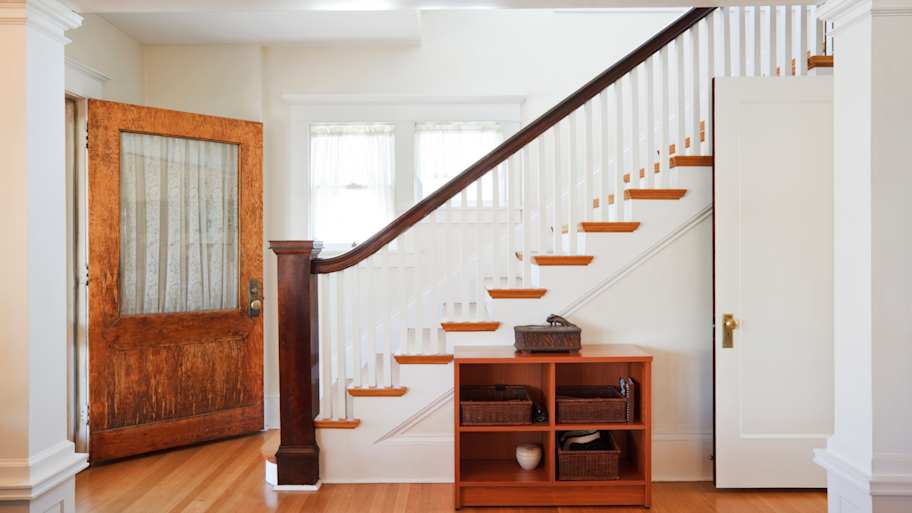
Whether you need to heat your home for the winter or simply enjoy lighting a fire occasionally, it's helpful to know the cost of a cord of wood in your area.
To fill, or to seal, that is the question


You can seal gaps and joints between drywall and wood with caulk.
Wood filler is for repairing and filling cracks, chips, and gouges in wood surfaces.
Caulk is flexible and moisture-resistant, and wood filler is hard and durable.
If your project needs sanding or painting, choose wood filler.
When your wood furniture, baseboards, or floors see damage, knowing which materials to use in repairing it can save you time, money, and effort. A common dilemma that many face is choosing between caulk versus wood filler. Understanding the differences between these two useful materials can make all the difference in achieving a polished and professional finish on and around your wood surfaces.
Caulk and wood filler serve different purposes, and the “right” one depends on your project. Caulk seals gaps and joints, providing a flexible barrier that can accommodate movement. On the other hand, you can use wood filler to fill holes and cracks in wood itself, providing a hard and durable surface that can blend seamlessly with the wood around it.

Caulk is a versatile material used to seal joints or seams against leakage in many different structures and piping. It prevents water, air, dust, and insects from entering spaces between building materials.
| Pros | Cons |
|---|---|
| Flexible | Not sandable |
| Water-resistant | Less durable |
| Easy to apply | May not be paintable |
Best for:
Sealing gaps around windows and doors
Filling cracks between baseboards and drywall
Preventing drafts around plumbing and electrical fixtures
Caulk's primary advantage is its flexibility. It allows for the natural movement of materials due to temperature changes or structural shifts without cracking or losing adhesion. This makes it particularly useful in areas prone to expansion and contraction, such as window frames and door jambs.
Additionally, caulk is water-resistant, making it ideal for bathrooms, kitchens, windows, and other moisture-prone areas—especially exterior caulking projects. Its ease of application and availability in many different forms and colors add to its versatility.
Despite its many benefits, caulk has some drawbacks. It cannot be sanded, which means any excess must be wiped away before it cures. This can make achieving a cohesive finish on wood challenging.
Caulk's durability is also limited compared to more rigid materials like wood filler, so it may need reapplication over time, especially in high-traffic areas. Furthermore, not all types of caulk are paintable, which can limit color-matching options in certain wood repair projects.

Wood filler can, unsurprisingly, fill imperfections in wood, such as cracks, holes, and gouges. It creates a smooth surface that can be sanded, stained, or painted to match the surrounding wood.
| Pros | Cons |
|---|---|
| Sands smoothly | Not flexible |
| Durable | Not waterproof |
| Paintable and stainable | Limited use |
Best for:
Filling nail holes and minor imperfections in wood surfaces
Repairing scratches and gouges in furniture
Preparing wood surfaces for painting or staining
Wood filler offers several advantages, especially in woodworking and repairs. You can sand it smooth, so you’ll get a seamless finish that blends with the surrounding wood. This makes it ideal for filling nail holes, dents, cracks, and other surface imperfections.
Once cured, wood filler is hard and durable and can withstand significant wear and tear, making it great for high-traffic areas. Additionally, you can stain or paint it to match the existing wood for a cohesive appearance.
The main drawback of wood filler is its lack of flexibility. Unlike caulk, wood filler hardens completely, which means it cannot accommodate any movement in the material you apply it to. This can lead to cracking or separation if used in areas subject to expansion and contraction.
Wood filler is also sensitive to moisture, which can cause it to swell or shrink over time if not properly sealed. This makes it less suitable for areas with high humidity or direct water exposure.
When deciding between caulk versus wood filler, consider the specific needs of your project. Each material has its own strengths and limitations, and the right choice will depend on factors such as flexibility, durability, and appearance. Caulk may be a better choice if you need flexibility or an easy application, but wood filler may win if your main concerns are durability and appearance.
Caulk excels in flexibility, making it ideal for sealing gaps and joints where movement is expected. It won’t crack or lose adhesion due to material shifts. In contrast, wood filler is rigid once cured and does not accommodate movement, which can lead to cracking if used in dynamic areas. For projects requiring flexibility, such as sealing window and door frames, caulk is the better choice.
Wood filler is more durable than caulk once cured, forming a hard surface that withstands wear and tear. This makes it suitable for high-traffic areas and projects requiring a strong, long-lasting finish. Caulk, while flexible, may need reapplication over time, especially in areas subject to frequent movement or stress. For projects demanding durability, such as repairing wooden furniture or filling holes in flooring, wood filler is the superior option.
Wood filler stands out for its ability to be sanded smooth and painted or stained to match the surrounding wood. This makes it ideal for creating seamless repairs that blend with the original wood material. Caulk, on the other hand, cannot be sanded and may not accept paint well unless specifically formulated for paintability. For projects requiring a smooth, paintable finish, wood filler wins.
Caulk is easy to apply and requires minimal tools, making it a convenient choice for quick repairs and sealing tasks. It comes in tubes or cartridges, allowing for precise application with a caulking gun. Wood filler requires more effort, including mixing and sanding, to achieve the desired finish. However, its ease of sanding and shaping can offset the initial effort. For straightforward applications, caulk is often simpler to use.
If you’re not confident in your application skills with either of these products, consider hiring a local caulking pro to get the job done right.
Most caulk guns have a built-in tool to cut the tip of the caulk tube. Look for a hole on the handle. If there is one, you can stick the tip of the tube in the hole at an angle and squeeze the trigger to cut it open.
Wood filler provides a polished appearance that can be stained or painted to match the surrounding wood, making it ideal for visible repairs. Caulk is available in various colors but lacks the ability to blend seamlessly with wood grain. For projects where appearance is a priority, such as furniture restoration or trim repairs, wood filler offers a more aesthetically pleasing finish.
For large cracks and holes in wood, wood filler is the best choice due to its ability to form a solid, durable surface. It can be layered to build up thickness and sanded smooth for a uniform finish. Caulk, while suitable for small gaps and joints, lacks the structural integrity to fill large cracks effectively. For substantial repairs, wood filler provides the strength and durability you need.
Choose caulk for sealing gaps between wood trim and drywall. Its flexibility accommodates the movement between materials and creates a smooth, seamless transition. Wood filler is not the best choice here because it cannot accommodate movement or provide a flexible seal. For gap-filling tasks next to drywall, caulk is the ideal choice.
The cost of caulk is lower than wood filler on average, and it comes in many different formulations to suit different projects. Wood filler may be more costly, particularly high-quality options designed for specific wood types or applications.
However, the long-term durability and finish quality of wood filler can justify the higher cost for certain projects. For projects on a budget, caulk offers a wallet-friendly solution. However, wood filler provides value through durability and finish quality.
From average costs to expert advice, get all the answers you need to get your job done.

Whether you need to heat your home for the winter or simply enjoy lighting a fire occasionally, it's helpful to know the cost of a cord of wood in your area.

The cost to install wainscoting depends on labor, materials, and square footage. This guide will help you budget for your next project.

Discover the cost to install a stair railing, including average prices, key cost factors, and tips to save on your project.

Are you looking for creative and unique built-in bookcase ideas? Be inspired to display your books in style and showcase your favorite genres.

Discover the cost to install hardwood stairs. Learn about material, labor, and additional factors to budget for your stair installation project.

Learn how to replace a broken or damaged railing spindle in just a few steps with basic tools. See how to measure, remove, and install a new spindle safely.